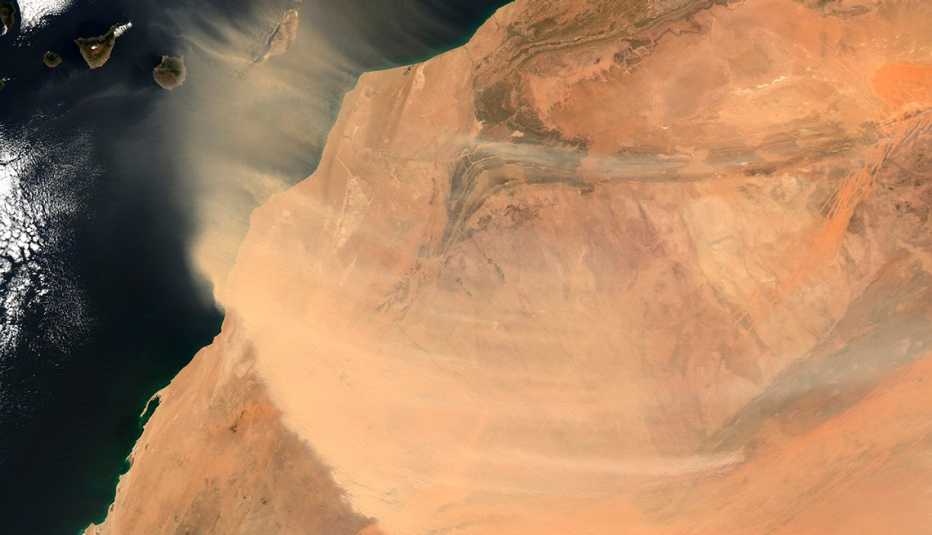AARP Hearing Center


If smoke from Canadian wildfires has you worried, now comes Saharan sandstorms to threaten perhaps the quality of the air you breathe.
A cloud of desert dust kicked up into the atmosphere a week ago in Northern Africa, crossed the Atlantic Ocean and blanketed most of the Caribbean on Monday. The Associated Press reported that the plume is expected to reach Florida, Louisiana, Alabama and Mississippi in the coming days. Before you panic, take a breath. The plumes aren’t expected to be as worrisome as the large, dense Saharan dust cloud that hit South Florida in 2020, prompting warnings for those with preexisting respiratory problems.
Similar health risks to wildfire smoke
The Centers for Disease Control and Prevention (CDC) says Saharan dust can be harmful to your health: “The particles can be breathed in and enter your lungs and bloodstream, potentially triggering asthma attacks in people who have asthma and aggravating other respiratory conditions. Saharan dust worsens air quality and increases the levels of particulate matter in the air.”
As with wildfire smoke and other “particulate pollution,” those at the greatest health risk include older adults, children and babies, people with underlying lung conditions such as asthma and people with chronic cardiopulmonary diseases, including COPD, the CDC says. In the U.S., the weather phenomenon usually peaks from late June through mid-August and is typically limited to southern states and the Caribbean.
Stay informed
The Environmental Protection Agency (EPA) has a color-coded Air Quality Index (AQI) that measures — on a scale of 0 to 500 – how clean or polluted the air is, and what associated health effects might be of concern, especially for ground-level ozone and particle pollution. Anything above 150 is considered unhealthy for everyone. The EPA’s website, AirNow.gov, allows users to enter a ZIP code to get an air quality forecast nearest you.
When Saharan dust levels are high, the CDC recommends spending more time indoors and avoiding outdoor activities, such as running, that require you to breathe hard.



































































More From AARP
Wildfire Smoke Comes With Heart Health Risks
Studies show air pollution can affect more than the lungs
How You Can Stay Safe This Summer
Follow these tips so you and your family can enjoy summertime activities
Do You Know the Warning Signs of Lung Cancer?
The most common symptoms are often easily overlooked or misdiagnosed